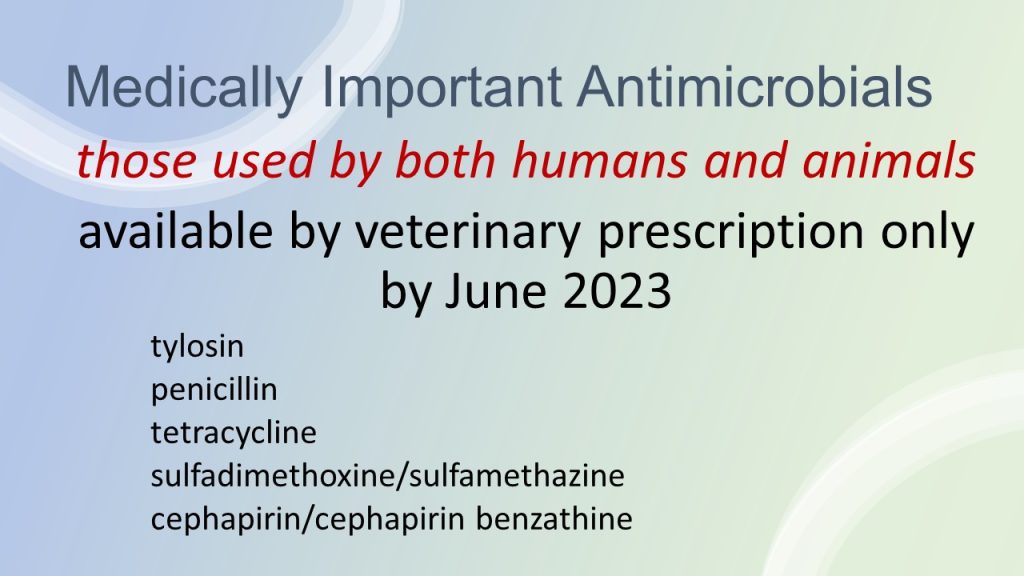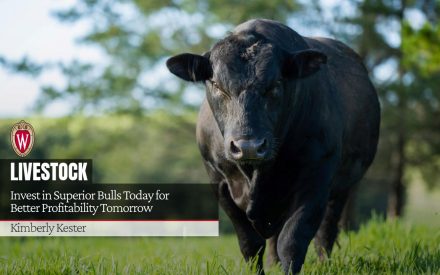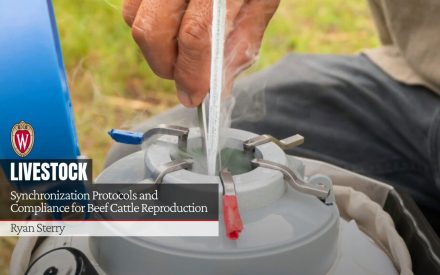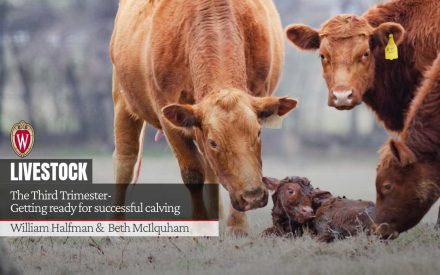This article was originally published in the Wisconsin Agriculturist
The FDA’s Center for Veterinary Medicine (CVM) plan for supporting veterinary antimicrobial stewardship will be fully implemented in 2023 when all remaining over-the-counter (OTC) antibiotics are switched to prescription-only status. The medically important antibiotics (used by humans and animals) becoming prescription only include injectable tylosin, injectable and intramammary penicillin, injectable and oral tetracycline, sulfadimethoxine and sulfamethazine, and cephapirin and cephapirin benzathine intramammary tubes. In addition, lincomycin and gentamicin swine antibiotics’ OTC status is switching to prescription only. Vaccines, dewormers, injectable and oral nutritional supplements, ionophores, pro/prebiotics and topical non-antibiotic treatments will not require veterinary prescription.

The CVM evaluates the safety of drugs used in food-producing animals, the impact drug resides have on human intestinal microflora, and the development of human antimicrobial resistance. Drug residues in meat, milk, eggs, and honey from treated animals expose bacteria to trace amounts that don’t kill them, but rather allow for the development of antibiotic resistance. Veterinarians are tasked to slow the rate of bacterial resistance by using antibiotics only when necessary to treat, control, or prevent disease. Doing so preserves antibiotic efficacy for humans and animals.
Under the new rule, producers with current veterinary client-patient relationships (VCPR) may purchase antibiotics directly from their veterinarian or from a distributor with the vet’s prescription. Local distributors (for example, farm supply stores) are currently evaluating their ability to manage prescription pharmaceuticals in the future. Wisconsin Administrative Code updates will make it easier for veterinarians (within the context of the VCPR) to utilize telehealth technologies and dispense medication prescribed by another veterinarian.
The VCPR is the key that unlocks the medicine cabinet. Wisconsin Statues’ Chapter 89 defines the VCPR as the relationship between a licensed veterinarian, a client (who owns the animal), and the patient (the animal) in which all the following apply as the veterinarian:
- Assumes the responsibility for making medical judgments regarding the patient, and the client agrees to accept those medical judgments and to follow the vet’s instructions.
- Has sufficient knowledge of the patient to initiate a general or preliminary diagnosis because of a recent exam or medically appropriate and timely visits to the animal’s premises.
- Is readily available for any follow-up treatment the patient may need, including adverse reactions to medications used or prescribed by the veterinarian.
Livestock veterinarians are in short supply in some areas of Wisconsin, so it is with urgency that I encourage all producers to develop their veterinary relationship. Engage them today to visit your farm to advise treatment protocols and drug orders so that you are prepared to treat your animals in a timely and effective manner.
Resources
FDA releases draft guidance on bringing remaining over-the-counter medically important antimicrobial drugs used for animals under veterinary oversight. CVM Updates. September 23, 2019. Accessed
Supporting antimicrobial stewardship in veterinary settings – Goals for fiscal years 2019-2023. FDA Center for Veterinary Medicine. September 2018. Accessed https://public4.pagefreezer.com/browse/FDA/08-02-2022T03:01/https://www.fda.gov/media/115776/download
Funk, B. and Fulton, J. New antibiotic restrictions soon to become reality. Drovers. March 4, 2022. Accessed https://www.drovers.com/news/industry/new-antibiotic-restrictions-soon-become-reality
Lamb, J. Updated veterinary rules almost final. WVMA Voice. July 2022.

 Invest in Superior Bulls Today for Better Profitability Tomorrow
Invest in Superior Bulls Today for Better Profitability Tomorrow Synchronization Protocols and Compliance for Beef Cattle Reproduction
Synchronization Protocols and Compliance for Beef Cattle Reproduction The Third Trimester- Getting ready for successful calving
The Third Trimester- Getting ready for successful calving Ayudar las vacas y a los terneros a recuperarse después de una Distocia
Ayudar las vacas y a los terneros a recuperarse después de una Distocia


